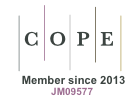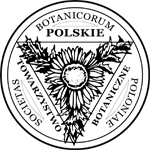Abstract
Heteromorphic achenes are formed within each capitulum of Galinsoga ciliata (Rafin) S.F. Blake. We examined (1) the effects of the duration of dry storage on germination and (2) the effect of burial in soil on viability and germination of heteromorphic diaspores. Fresh harvested peripheral achenes remained dormant, while central achenes germinated at 60%. Both achene types became non-dormant after one month of dry storage. In successive months of dry storage, peripheral achenes demonstrated a higher germination percentage than central achenes. The peripheral and central achenes showed similar temperature requirements during dry storage. A similar germination pattern was observed in both achene types, with a germination peak in March (96% of peripheral achenes at 12, 26 and 34oC; 90% of central achenes at 26 and 34oC). The germination capacity deteriorated over time. After 19 months of dry storage, both achene morphs failed to germinate at 12oC. At a 26o and 34oC, the same group of achenes continued to germinate at a relatively high level. After six and seven months of soil storage, 90-95% of both achene types remained alive. Dimorphic achenes were characterized by similar germination percentage (89-99%) at all temperature intervals, whereas peripheral achenes exhumed in May were the fastest to germinate. After 18 months of storage in soil (successive growing season), most of the harvested achenes were dead. The studied achenes did not form a permanent seed bank.
Keywords
Galinsoga ciliata; heteromorphism; germination; dry storage; soil seed bank






